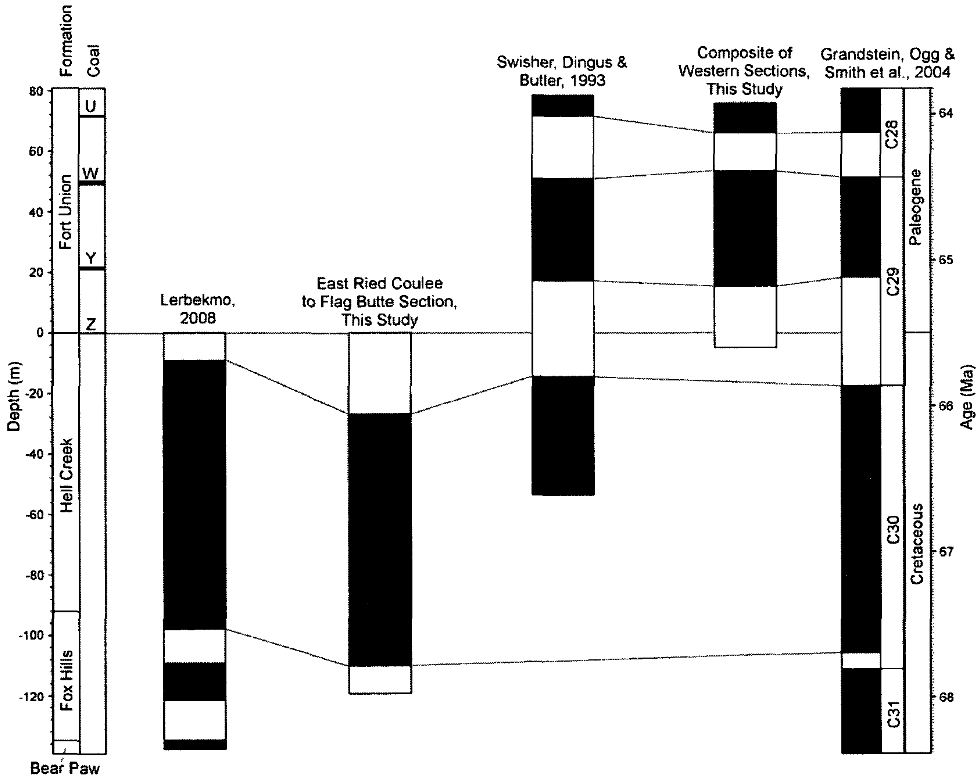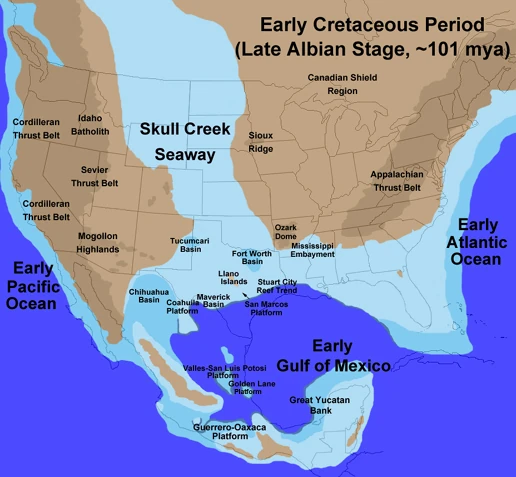https://www.iflscience.com/plants-and-animals/incredible-treasure-trove-of-fossils-seems-to-be-from-the-day-the-dinokilling-asteroid-h
A jumble of fossilized freshwater fish, trees and marine ammonites from North Dakota appear to be from the day an asteroid created the giant Chicxulub crater, wiping out most of the living things on the planet. The mix of land and sea organisms, all bundled into one site, appear to have been killed by a tsunami triggered by seismic waves radiating from the impact. Even though dinosaurs found at this site have not been definitively tied to the event, the site may tell us more about the last mass extinction than any other.
At the end of the Cretaceous Era, the middle of what is now North America was covered by the Western Interior Seaway. At Tanis, North Dakota, University of Kansas PhD student Robert DePalma has found a mix of marine and terrestrial fossils that appear to have been dumped there by cataclysmic waves from the nearby seaway. DePalma thinks these were not tsunamis arriving from the Gulf, but standing waves called seiches triggered in the seaway by seismic waves within minutes of impact.
In a paper to be published in Proceedings Of the National Academy of Science tomorrow, DePalma reports the gills of more than half the suspension-feeding fish buried at Tanis contain tiny droplets of glass that are among the identifying features of large asteroid strikes. The heaped fossils are topped by a cap of material with the high concentration of iridium, the metal whose worldwide distribution first alerted geologists to the fact an asteroid hit the Earth at this time. The site was apparently undisturbed by scavengers, as would normally happen with such a larger shallow burial, suggesting few survived.
Together these findings create a picture of a rain of ejected material sweeping the continent less than two hours after the asteroid hit, followed by walls of water least 10 meters (33 feet) high. The debris from both was buried under a heavier rain of asteroid-induced rock and ash from the consequent fires.
“Timing of the incoming ejecta spherules matched the calculated arrival times of seismic waves from the impact, suggesting that the impact could very well have triggered the surge,” DePalma said in a statement.
Co-author David Burnham added: “The sedimentation happened so quickly everything is preserved in three dimensions – they’re not crushed… We have one fish that hit a tree and was broken in half.”
Several of the fish specimens found at Tanis, in the aptly named Hell Creek formation, are thought to be from previously unknown species.
For 30 years the theory an asteroid strike led to the extinction of the dinosaurs (birds aside) has dominated the public imagination and convinced most scientists. However, a smaller group of geologists and paleontologists attribute the extinction to enormous volcanic eruptions in India. Certainly, these transformed the world’s climate over hundreds of thousands of years either side of the asteroid strike, and may have been of even more planetary significance.
Timing is key to this dispute. Volcano advocates argue the absence of dinosaur fossils from rocks laid down immediately below the asteroid debris indicates they were already gone by then. This is why DePalma’s claim has hit the paleontological world with the metaphorical force of the asteroid itself.
The same site has produced a Triceratops and hadrosaur. Neither’s death has yet been definitively tied to the impact, but the authors argue their presence in rocks of similar age shows these species, if not the individuals, were alive when the asteroid hit.
DePalma is fully aware of the significance of his claim “As human beings, we descended from a lineage that literally survived in the ashes of what was once the glorious kingdom of the dinosaurs,” he said. “And we’re the only species on the planet that has ever been capable of learning from such an event to the benefit of ourselves and every other organism in our world.”




